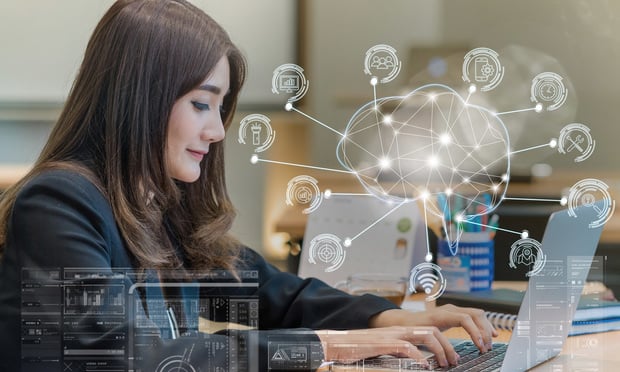Features

USPTO Issues New Guidance On Rejecting Patent Claims for Obviousness
The United States Patent and Trademark Office recently published new guidance explaining the requirements for patent examiners to reject patent claims for obviousness in view of what was already known in the prior art.
Features

"Holy Fair Use, Batman": Copyright, Fair Use and the Dark Knight
The copyright for the original versions of Winnie the Pooh and Mickey Mouse have expired. Now, members of the public can create — and are busy creating — their own works based on these beloved characters. Suppose, though, we want to tell stories using Batman for which the copyright does not expire until 2035. We'll review five hypothetical works inspired by the original Batman comic and analyze them under fair use.
Features

Intellectual Property In Legal Tech: Lessons from Recent Cases
As technology continues to permeate the legal industry, the significance of IP in safeguarding innovations, ensuring fair competition, and fostering a culture of creative legal solutions becomes paramount.
Columns & Departments
IP News
Appeals Court Backs Nickelback In Copyright Infringement Case
Features

Beyond Language: How Multimodal AI Sees the Bigger Picture
The possibilities for patenting innovative applications of multimodal models across industries are endless.
Features

Protecting Technology-Assisted Works and Inventions: Where Does AI Begin?
Just like any new technology, efforts to protect and enforce intellectual property on AI-based technologies are likely to be hampered by a lack of both a unified governing framework and a common understanding of the technology.
Features

Content-Licensing Payment Dispute Turns On Existence of Fiduciary Relationship
A recent New York federal court decision in a dispute between a broker that sublicenses program content and a broadcaster that sublicensed content from the broker considered the interaction of contract language and extra-contractual elements of the parties' relationship to determine whether a fiduciary relationship existed.
Features

Federal Judge Blasts Patent Trolls
A recent order from Chief Judge Colm Connolly in the U.S. District Court for the District of Delaware may serve as a warning for "patent trolls" — the derogatory term used to describe companies whose sole function is to acquire and then assert patents, often in cases that are questionable on the merits — against filing cases in Delaware going forward.
Columns & Departments
IP News
Federal Circuit: ITC Did Not Err In Finding Violation of Section 337 Federal Circuit: PTAB Did Not Err In Claim Construction and Finding Certain Claims Obvious
Features

Protecting Technology-Assisted Works and Inventions: Where Does Smart Technology End and AI Begin?
At what point does a "smart" computing system, or advanced software program, qualify as AI in the eyes of pertinent regulatory or judicial authorities? When is an individual considered to have merely deployed an AI-based computing tool to assist with creating a work of art or conceiving of a technological innovation? Each of these questions is explored in this article, giving consideration to currently prevailing guidelines from administrative bodies and the courts.
Need Help?
- Prefer an IP authenticated environment? Request a transition or call 800-756-8993.
- Need other assistance? email Customer Service or call 1-877-256-2472.
MOST POPULAR STORIES
- Second Circuit Reinforces Bankruptcy Code Settlement Payment Safe HarborThe Second Circuit affirmed the lower courts' judgment that a "transfer made … in connection with a securities contract … by a qualifying financial institution" was entitled "to the protection of ... §546 (e)'s safe harbor ...."Read More ›
- The DOJ's Corporate Enforcement Policy: One Year LaterThe DOJ's Criminal Division issued three declinations since the issuance of the revised CEP a year ago. Review of these cases gives insight into DOJ's implementation of the new policy in practice.Read More ›
- The DOJ's New Parameters for Evaluating Corporate Compliance ProgramsThe parameters set forth in the DOJ's memorandum have implications not only for the government's evaluation of compliance programs in the context of criminal charging decisions, but also for how defense counsel structure their conference-room advocacy seeking declinations or lesser sanctions in both criminal and civil investigations.Read More ›
- Use of Deferred Prosecution Agreements In White Collar InvestigationsThis article discusses the practical and policy reasons for the use of DPAs and NPAs in white-collar criminal investigations, and considers the NDAA's new reporting provision and its relationship with other efforts to enhance transparency in DOJ decision-making.Read More ›
- Questions Every Law Firm Business Development Leader Should Be AskingIn a legal marketplace transformed by technology, heightened client expectations, and fierce competition, law firm leaders must approach strategy with rigor and clarity. The following questions, accompanied by relevant statistics and explanations, offer a focused guide for uncovering opportunity and driving sustainable growth.Read More ›
